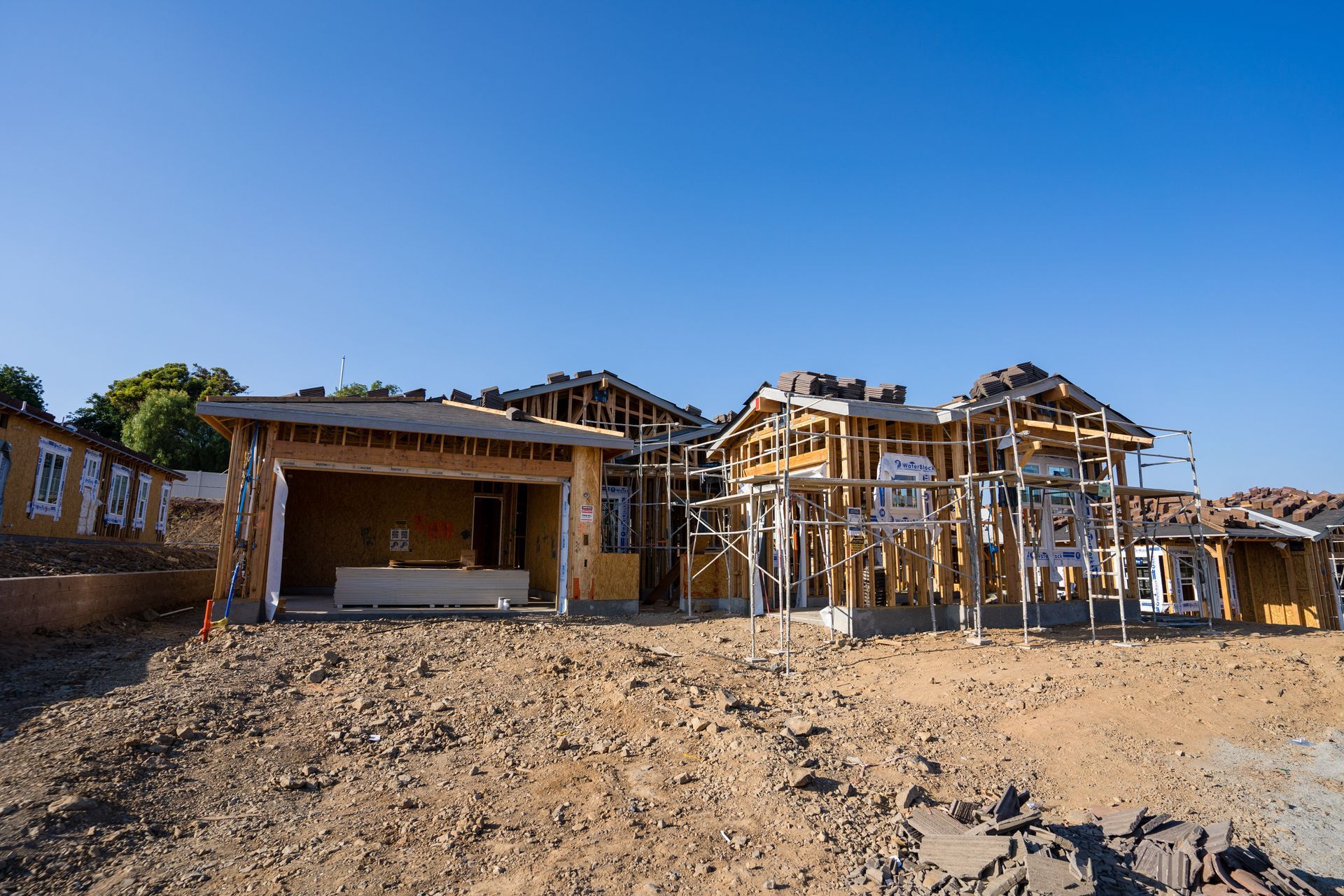Sacramento Real Estate Market Trends and Interest Rates: July 2024 Analysis

As we move into the heart of summer, the Sacramento real estate market continues to evolve, reflecting broader economic conditions, changing buyer preferences, and shifts in interest rates. July 2024 brings new insights into the local housing market, which are crucial for buyers, sellers, and investors alike. This comprehensive analysis will delve into the latest trends, interest rate movements, and their implications for the Sacramento real estate market. Whether you are a first-time buyer, a seasoned investor, or someone looking to sell your house, understanding these dynamics is essential.
Overview of Sacramento Real Estate Market in July 2024
Current Market Conditions
The Sacramento real estate market in July 2024 is characterized by a robust demand for housing, fueled by a combination of low inventory and strong economic fundamentals. Key indicators include:
- Median Home Prices: The median home price in Sacramento has continued its upward trajectory, reaching $540,000 in July 2024, a 6% increase year-over-year.
- Inventory Levels: The inventory of homes for sale remains low, with a slight increase from previous months but still below historical averages. This scarcity is driving competition among buyers.
- Days on Market: Homes are selling quickly, with an average of 20 days on the market, reflecting high buyer interest and competitive bidding.
- Buyer Demographics: The market sees a mix of first-time buyers, move-up buyers, and investors, each group contributing to the vibrant market dynamics.
Interest Rates and Their Impact
Interest rates play a crucial role in shaping the real estate market. In July 2024, the Federal Reserve's monetary policy and broader economic conditions have influenced mortgage rates:
- Current Mortgage Rates: As of July 2024, the average 30-year fixed mortgage rate is 5.25%, a slight increase from the previous quarter but still historically low.
- Factors Influencing Rates: Factors such as inflation, economic growth, and Federal Reserve policies are key determinants of mortgage rates. Recent rate hikes by the Federal Reserve to curb inflation have led to gradual increases in mortgage rates.
- Impact on Buyers: Higher mortgage rates impact buyers' purchasing power, potentially cooling demand slightly but still maintaining strong interest due to underlying housing needs.
Key Market Trends in Sacramento
1. Rise in Home Prices
The continued rise in home prices in Sacramento reflects the sustained demand and limited supply. Several factors contribute to this trend:
- Strong Economic Growth: Sacramento's economy has been growing steadily, attracting new residents and boosting housing demand.
- Remote Work Trends: The shift towards remote work has made Sacramento an attractive destination for buyers seeking affordable housing compared to larger California cities.
- Influx of Out-of-State Buyers: Many buyers from higher-cost regions, such as the Bay Area, are relocating to Sacramento, driving up home prices.
2. Low Inventory Levels
Despite efforts to increase housing supply, inventory levels remain low. This is due to:
- Limited New Construction: While there has been some increase in new home construction, it has not kept pace with demand, partly due to labor shortages and supply chain issues.
- Homeowner Reluctance to Sell: Many homeowners are hesitant to sell their homes, either due to uncertainty about finding a new home or preferring to stay put in a low-interest-rate environment.
3. High Buyer Competition
The combination of low inventory and high demand has resulted in intense competition among buyers:
- Multiple Offers: It is common for homes to receive multiple offers, often above the asking price.
- Cash Offers: Some buyers are making cash offers to stand out in competitive bidding situations.
- Quick Decisions: Buyers need to act quickly, with little time for hesitation, to secure a property.
4. Interest Rate Sensitivity
The sensitivity of buyers to interest rate changes is evident in the market dynamics:
- Adjusting Budgets: Buyers are adjusting their budgets to account for higher mortgage rates, which can affect the type of home they can afford.
- Refinancing Activity: There has been a decline in refinancing activity as mortgage rates rise, impacting homeowners' ability to tap into home equity.
Implications for Buyers
First-Time Buyers
First-time buyers face several challenges and opportunities in the current market:
- Affordability Concerns: Rising home prices and higher interest rates can make it harder for first-time buyers to afford a home. It is essential to work with experienced real estate agents and mortgage brokers to explore available options and find suitable financing.
- Down Payment Assistance: Programs offering down payment assistance can be crucial for first-time buyers, helping to bridge the gap between savings and required down payments.
- Flexibility and Patience: Being flexible with home preferences and patient in the search process can increase the chances of finding a suitable property.
Move-Up Buyers
Move-up buyers, those looking to sell their current home and buy a larger or more expensive property, must navigate several factors:
- Timing the Sale and Purchase: Coordinating the sale of the current home and the purchase of a new one can be challenging. It is essential to have a clear plan and work with professionals to manage the process smoothly.
- Financing Considerations: Move-up buyers need to consider the impact of higher mortgage rates on their new home purchase and explore options like bridge loans or contingent offers.
Investors
Real estate investors are actively participating in the Sacramento market, driven by the potential for appreciation and rental income:
- Investment Properties: Investors are looking for properties with strong rental potential and opportunities for appreciation. Analyzing market trends and neighborhood dynamics is crucial for making informed investment decisions.
- Fix-and-Flip Opportunities: Some investors are focusing on fix-and-flip projects, aiming to buy properties at lower prices, renovate them, and sell at a profit. This strategy requires careful planning and market knowledge.
Implications for Sellers
Maximizing Sale Price
Sellers can take several steps to maximize their sale price in the current market:
- Strategic Pricing: Pricing the home competitively and based on recent market trends can attract more buyers and encourage competitive bidding.
- Home Staging and Curb Appeal: Investing in home staging and improving curb appeal can make the property more attractive to potential buyers.
- Marketing Strategies: Utilizing professional photography, virtual tours, and targeted marketing can reach a broader audience and generate more interest.
Timing the Sale
Timing the sale of a home is crucial for sellers looking to maximize their returns:
- Market Conditions: Monitoring market conditions and trends can help sellers identify the best time to list their property. Selling during peak demand periods can result in higher offers.
- Seasonal Trends: Understanding seasonal trends in the real estate market can also guide the timing of the sale. For example, spring and summer are typically busy seasons for real estate transactions.
Working with Real Estate Professionals
Working with experienced real estate professionals can provide valuable insights and support throughout the selling process:
- Real Estate Agents: An experienced real estate agent can provide market analysis, pricing strategies, and negotiation skills to help sellers achieve their goals.
- Home Inspectors: Conducting a pre-listing home inspection can identify potential issues and allow sellers to address them before listing, making the property more attractive to buyers.
Future Outlook for Sacramento Real Estate
Long-Term Trends
Several long-term trends are likely to shape the Sacramento real estate market in the coming years:
- Population Growth: Sacramento is expected to continue experiencing population growth, driven by economic opportunities and quality of life factors.
- Housing Supply: Efforts to increase housing supply through new construction and zoning changes will be crucial in addressing the ongoing inventory shortage.
- Sustainability Initiatives: Growing emphasis on sustainability and energy efficiency may influence the types of homes and developments in demand.
Potential Challenges
While the outlook for Sacramento's real estate market remains positive, several challenges could impact future trends:
- Economic Uncertainty: Economic uncertainty, including potential recessions or changes in employment rates, can affect housing demand and market stability.
- Interest Rate Fluctuations: Future fluctuations in interest rates will continue to influence buyer affordability and market dynamics.
- Regulatory Changes: Changes in housing policies, zoning regulations, and tax laws can impact the real estate market and investment strategies.
The Sacramento real estate market in July 2024 is characterized by strong demand, rising home prices, and low inventory levels. Interest rates play a significant role in shaping market dynamics, impacting both buyers and sellers. Understanding these trends and their implications is essential for making informed decisions in the real estate market.
Whether you are a first-time buyer navigating affordability challenges, a move-up buyer coordinating the sale and purchase of homes, or an investor seeking opportunities, staying informed about market trends and working with experienced professionals can help you achieve your goals.
For sellers, maximizing sale price and timing the sale strategically are crucial for success in a competitive market. Working with real estate agents and leveraging effective marketing strategies can enhance the chances of a successful sale.
As the Sacramento real estate market continues to evolve, keeping an eye on long-term trends and potential challenges will be important for all market participants. By staying informed and proactive, buyers, sellers, and investors can navigate the market effectively and make the most of the opportunities available.
If you're looking to learn more about buying, selling, relocating or get the best real estate experience in the Sacramento area, get in touch with CJ Domondon. His team can provide valuable insights and guidance to help you navigate the market. You can contact CJ Domondon directly to schedule a consultation or discuss your real estate needs.








